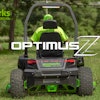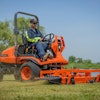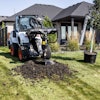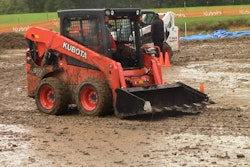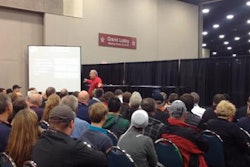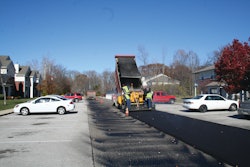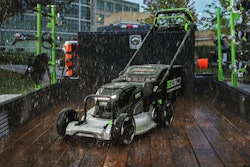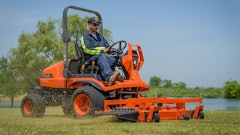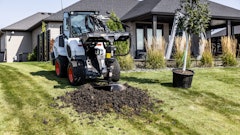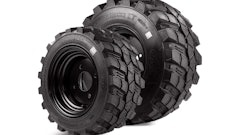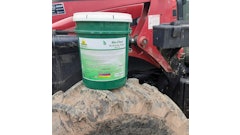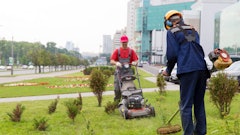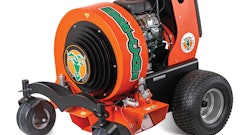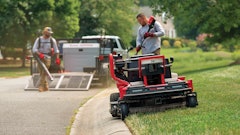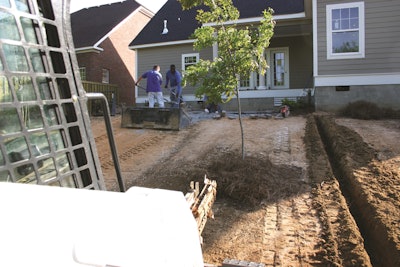
Landscape contractors use a skid steer for a variety of tasks. These machines are great for lifting and hauling things around jobsites, such as pallets of pavers, mulch or plants. A skid steer is also useful for loading truck beds full of mulch and topsoil.
With the countless implements available for most skid steers today, landscape contractors are also using skid steers and track loaders for tasks such as digging holes to plant trees, trenching to install irrigation line, prepping soil, sweeping, and the list goes on. For those contractors in the snowbelt, skid steers are also useful in a variety of snow-clearing operations.
Contractors have many good reasons to invest in a skid steer or compact track loader. Here are some things to look for when doing their shopping.
Rated Operating Capacity (ROC) – Use this as a starting point to determine the size class in which to compare machines. It is very important to understand that rated operating capacity has nothing to do with a machine’s breakout and lift force capabilities. The rated operating capacity for skid steers is calculated by taking 50% of the measured tipping load of the machine. The rated operating capacity for rubber track loaders can be calculated at 50% or 35% of the tipping load of the machine since there is no industry standard.
Lift Style and Lift Path – To determine the appropriate machine and lifting arrangement, one needs to answer the question: What function is the machine primarily performing, i.e. truck loading, grading, material placement? Then, recognize that there are two types of lifting arrangements available on skid steer loaders and rubber track loaders today: radial lift and vertical lift.
The radial lift loader design, when raised, moves in an arc or radius fashion. Strength and durability of the linkage as well as reach at mid-lift are benefits of radial lift.
Vertical lift linkage maintains a more vertical path from the bottom of the lift cycle to the top. As the loader is raised, the bucket pin will travel in a more vertical path upward vs. the path taken by a radial lift machine. The benefit of a vertical lift linkage is generally higher lifting heights, extended reach at the top of the lift cycle, increased dump angle and higher rated operating capacity when compared to a similar-sized radial lift machine. Every manufacturer achieves a vertical lift path in a different manner, making no two vertical lift paths identical. It is very important to understand the differences in vertical lift pattern from one manufacturer to another.
Engine Power – While engine power is important, other factors should be considered when evaluating a machine’s overall performance. Engine power alone is not a very good indicator of overall machine performance.
Other factors such as efficient hydraulic systems, machine weight, wheelbase, machine balance and axle torque (drawbar performance) could impact a machine’s overall performance more than horsepower. Some manufacturers have to increase engine power in order to overcome inefficiencies in machine design, such as weight, balance or inefficient drive pumps and motors.
Hydraulic Power – Hydraulic power is expressed in terms of hydraulic horsepower. Both hydraulic horsepower and engine power need to be considered when determining work tool performance. It is a combination of these two elements that lead to optimal work tool performance. Ignoring either factor may lead to less than desired performance. Hydraulic horsepower is most important when operating work tools such as trenchers and cold planers that require a high percentage of the machine’s total available power.
Machine Dimensions/Operating Weight – Machine dimensions such as width, height, length and weight are also important considerations. Customers are often limited in their machine choices due to their transportation options and specific application requirements.
